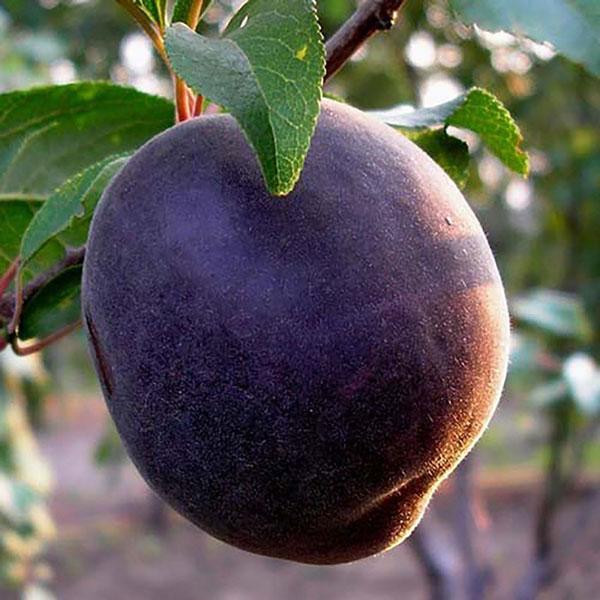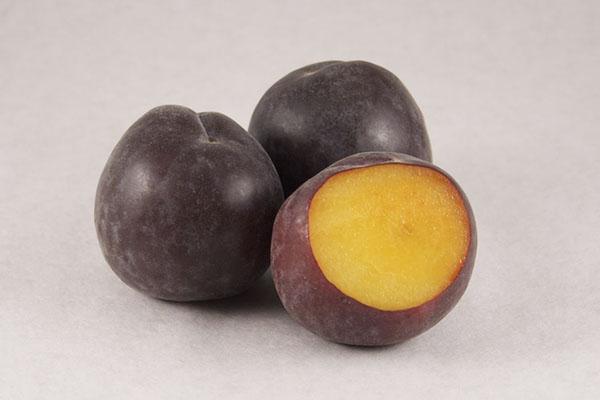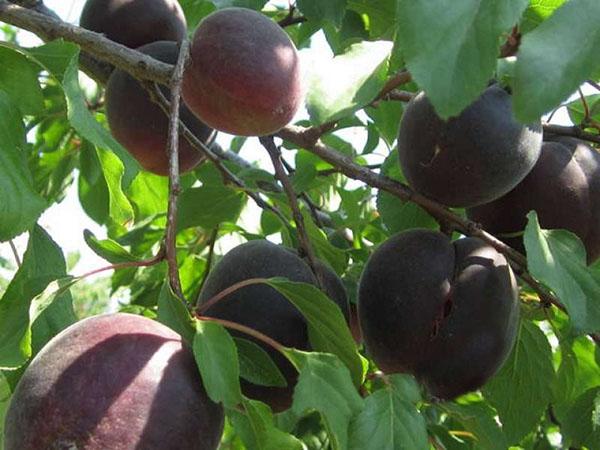Introducing the Black Prince hybrid apricot
 Apricot Black Prince is grown by Russian gardeners in the southern and northern regions. The variety has a pleasant sweet and sour taste, an unusual dark plum color. The size of the fruit reaches 50-60 grams, and in the southern regions it reaches 90 grams. The variety is well resistant to diseases, frost resistant and gives a stable harvest.
Apricot Black Prince is grown by Russian gardeners in the southern and northern regions. The variety has a pleasant sweet and sour taste, an unusual dark plum color. The size of the fruit reaches 50-60 grams, and in the southern regions it reaches 90 grams. The variety is well resistant to diseases, frost resistant and gives a stable harvest.
Apricot Black Prince: characteristics and description

Variety Black prince early. Fruits begin to ripen from late July to mid-August, depending on the region of growth. Stable fruiting begins from the second year of life.
The fruits have the following characteristics:
- The color of the fruit is plum; closer to ripening it darkens almost to black shades.
- The pulp is dark yellow with burgundy blotches.
- The skin is thin.
- A small stone does not cut well from the pulp.
After full ripening, apricots quickly crumble, so harvesting begins several days before they ripen. This will allow the fruit to be stored and transported to storage or sale.
Planting and leaving
 The apricot variety Black Prince is not picky about care, so even a novice gardener can grow it. Planting a seedling does not require special soil preparation and site selection. All planting rules are similar to its yellow-fruited relatives. The black prince, like other apricots, loves a sunny place, protected from drafts.
The apricot variety Black Prince is not picky about care, so even a novice gardener can grow it. Planting a seedling does not require special soil preparation and site selection. All planting rules are similar to its yellow-fruited relatives. The black prince, like other apricots, loves a sunny place, protected from drafts.
This variety is not picky about the soil, but it grows better on loose soil, with good rainwater permeability. It does not tolerate saline soil with excessive moisture.
Sapling selection
 For gardeners who decide to start a Black Prince variety, an important step is the choice of a seedling.
For gardeners who decide to start a Black Prince variety, an important step is the choice of a seedling.
It is better to purchase a seedling in proven stores or nurseries, since many give out ordinary seed for elite hybrid varieties. The best option would be if you can see the mother plant yourself.
When choosing a seedling, pay attention to the following indicators:
- The plant should be no more than 1 meter in size.
- Age - no more than 1 year.
- The trunk of the seedling should not have any damage, signs of disease, be even and smooth.
- The seedling should have several branches with buds.
- The root system of the seed is fibrous, well-developed, without intergrown mats.
If the cutting is purchased in the autumn, it must be provided with a comfortable wintering place. A cellar or other cool place would be ideal. To preserve the roots of the cutting. Dip them in clay, let dry and wrap in a bag. Store in a dry box. In this case, the roots should be covered with wet sand.
Landing is carried out in the spring. The pit is prepared in a month of planting, and it is best to prepare the place in the fall.
When choosing a place for the Black Prince apricot, take into account the following points:
- It is necessary to set aside the landing space on the south side.
- Choose a place fenced in buildings and protected from wind and drafts.
- Apricot loves a lot of light and warmth.
- The seedling does not take root well in a clay damp bud.
- The place should not be in the lowlands.
Good neighbors for the Black Prince will be a plum or cherry plum... They will help cross-pollination and increase yields.
Landing in the ground
 In the spring, the selected place is dug up, loosened and a hole is prepared a little deeper than the size of the root system.
In the spring, the selected place is dug up, loosened and a hole is prepared a little deeper than the size of the root system.
Further landing is carried out according to the scheme:
- The seedling is taken from the winter storage and examined for damage and disease.
- Leaves are removed from the seedling and shortened a little.
- The cutting is lowered into the prepared hole in such a way that the root collar is lowered below the surface by 2-3 cm.
- Gradually it is covered with loose earth and pressed down.
- After stepping back 20 cm from the seedling, drive in a peg to support the seedling in the growth process.
- Make a small embankment around the perimeter of the hole so that the water does not spread during watering.
- Sprinkle with plenty of warm water.
- For better rooting, you can add mulch or compost.
After all the manipulations, the stalk is tied to a peg.
Care rules
 A hybrid variety of apricot Black Prince does not require special attention when leaving. Watering and pruning is carried out in the same way as for other fruit trees. For wintering, it is better to cover young trees at the base.
A hybrid variety of apricot Black Prince does not require special attention when leaving. Watering and pruning is carried out in the same way as for other fruit trees. For wintering, it is better to cover young trees at the base.
In the process of active growth, the seedling requires moderate watering, since the apricot does not tolerate drought well. But in rainy times it is better to refuse watering, since there is a risk of root rot. The abundance and frequency of watering the plant is regulated depending on the age. The older the tree, the less additional watering it needs. It is better to water in the evening.
When feeding, keep in mind that this variety does not like nitrogen fertilizers and does not tolerate excess feeding.
The feeding is carried out with phosphorus and potassium during the period of fruit ripening and active growth. Fertilizers should be added in small portions at the rate of one bucket per 2 sq. m of soil.
Pruning of apricot trees by the Black Prince is carried out in the fall as a prophylaxis against diseases.
The apricot variety Black Prince is not whimsical in care, they give a bountiful harvest already in the second year of life. This variety of apricots makes excellent jam, compote and jelly... This delicacy will be an excellent addition to tea in cold winter.